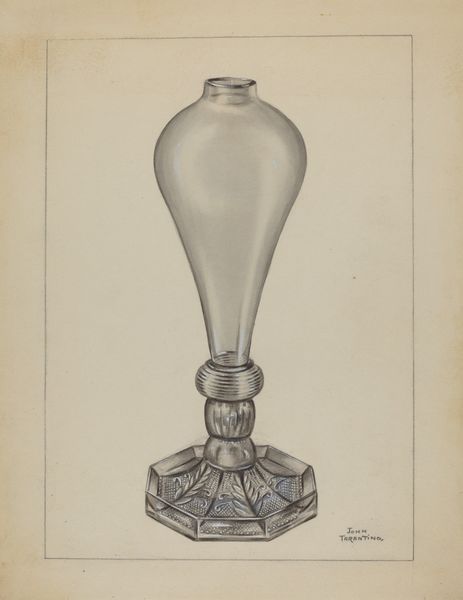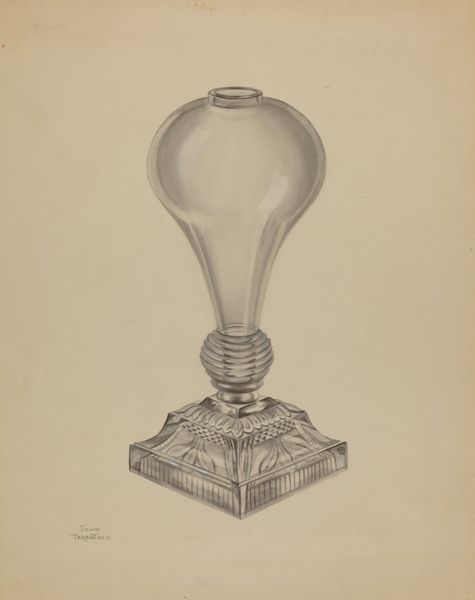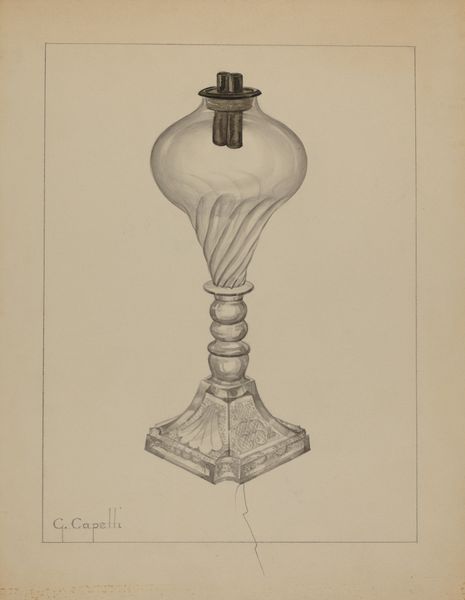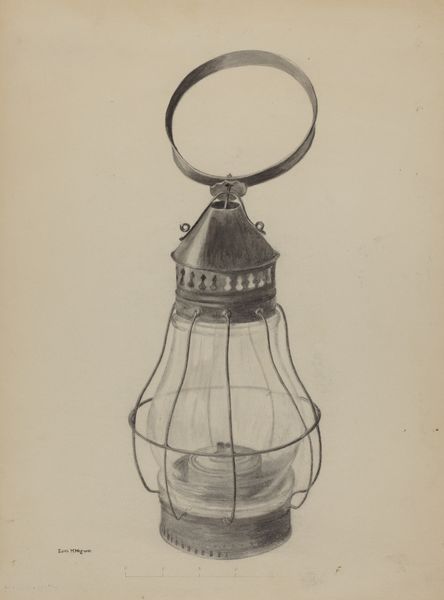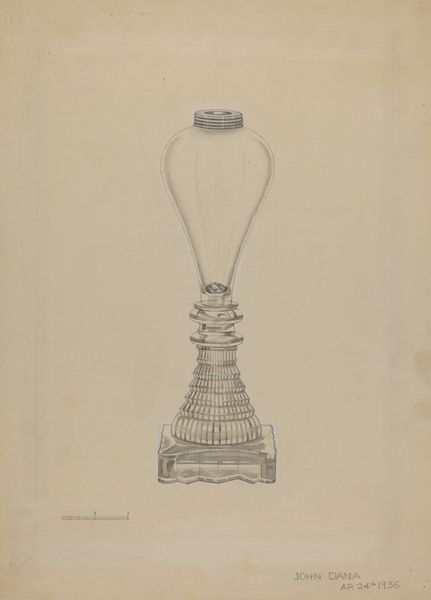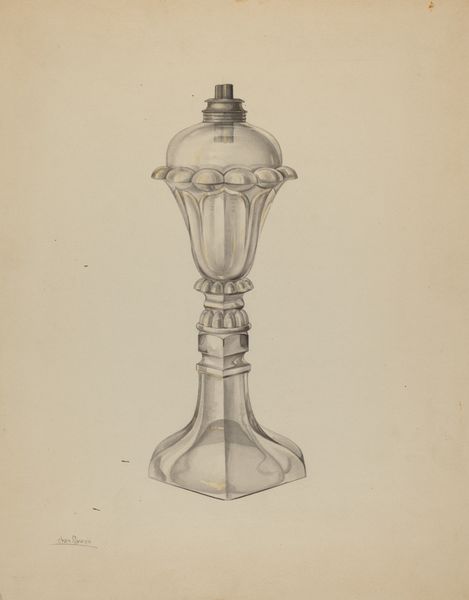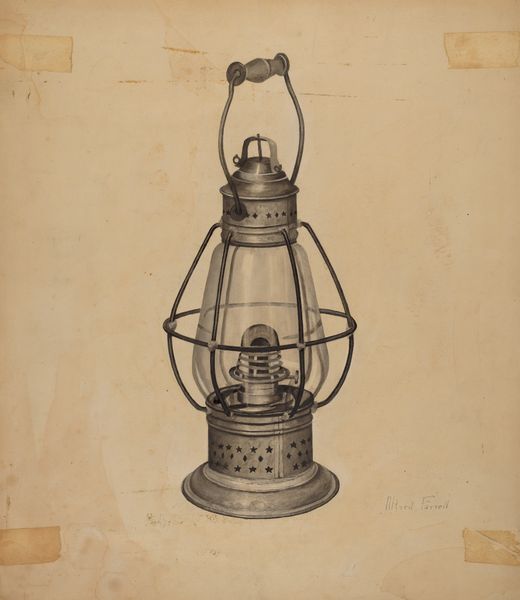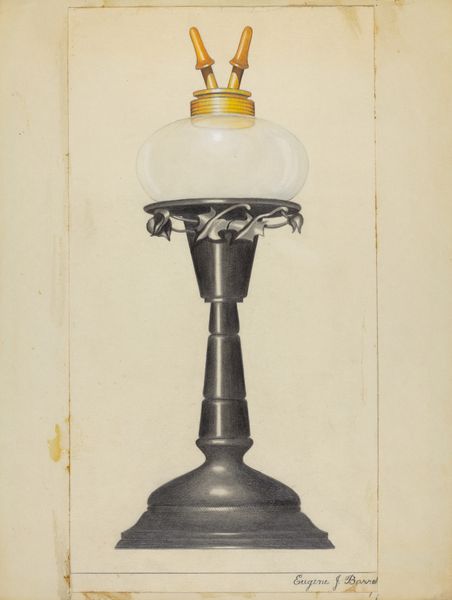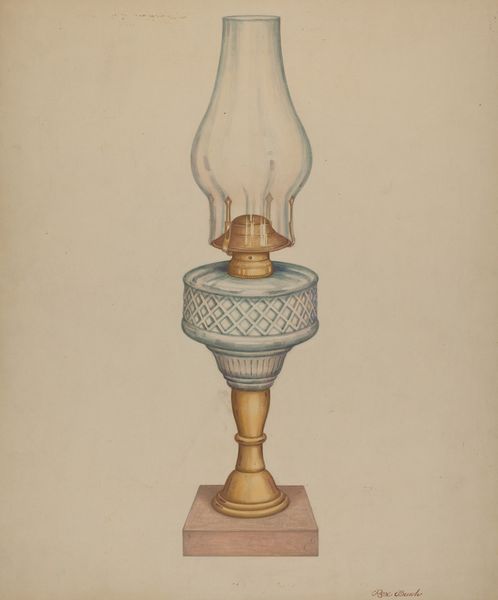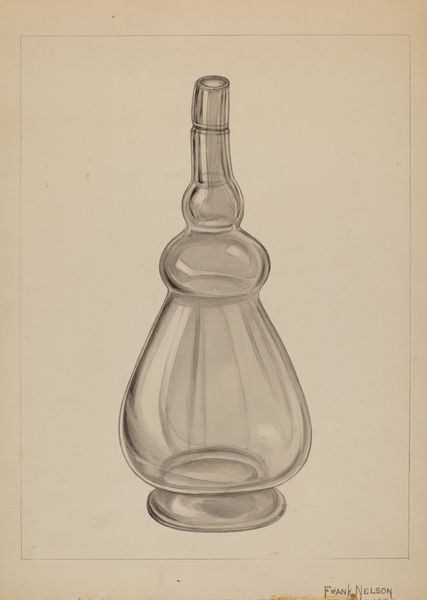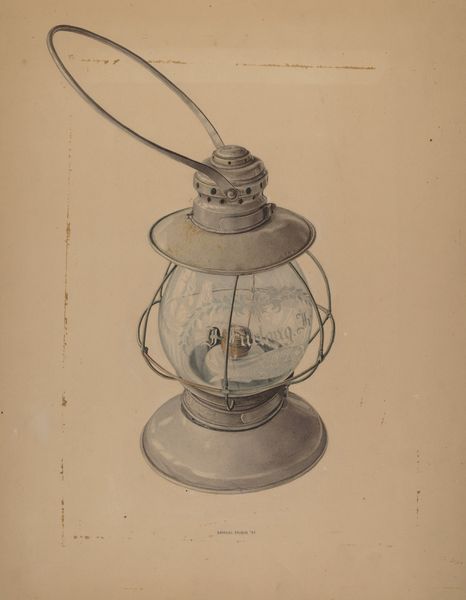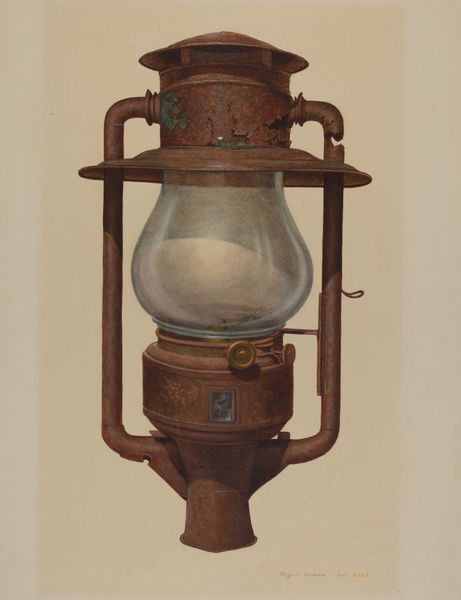
drawing
#
pencil drawn
#
drawing
#
aged paper
#
toned paper
#
light pencil work
#
pencil sketch
#
personal sketchbook
#
pencil drawing
#
pencil work
#
watercolour illustration
#
watercolor
Dimensions: overall: 29.3 x 22.9 cm (11 9/16 x 9 in.) Original IAD Object: 9 7/8"high; 3 7/8" wide
Copyright: National Gallery of Art: CC0 1.0
Editor: This is John Tarantino's "Lamp," created around 1936. It's a drawing, seemingly pencil and perhaps some watercolour on toned paper. It has a delicate, almost ghostly quality. The form is fascinating with that tear-drop shaped glass. What stands out to you when you look at this drawing? Curator: What captures my attention is the artist's deliberate exploration of form and line. Note how the verticality of the lamp's stem is contrasted against the bulbous, almost organic shape of the upper part. Consider also the meticulous detail in the base: the interplay of geometric shapes and the subtle shading used to convey depth. It prompts us to consider the relationship between structure and embellishment. How does the drawing’s surface itself – the aged paper and light pencil work – contribute to your reading of the piece? Editor: I think the aged paper softens the lines and adds a layer of patina to the drawing, making it seem both timeless and a little fragile. It makes the lamp seem more like a memory than a solid object. But doesn’t focusing just on the lines and shapes ignore what the lamp is meant to do, which is to hold light? Curator: While functionality is inherent, here it’s subjugated to formal exploration. By divesting the lamp of its illuminating function, the artist directs our gaze toward its purely aesthetic qualities, prompting reflection on what constitutes beauty. What impact do you think the choice of medium – drawing as opposed to painting or sculpture – has on our appreciation of its formal elements? Editor: It feels very immediate and personal, almost like a study rather than a finished work, which, to me, focuses the attention more on the execution than on the object depicted. Curator: Precisely. It emphasizes the artistic process, highlighting the artist’s engagement with form, texture, and composition. A fitting subject for artistic inquiry, rendered skillfully and sensitively. Editor: I now understand how focusing on form and medium can offer a valuable insight that moves beyond a simple observation. Curator: Indeed, art invites us to appreciate the intrinsic qualities that define an object, separate from its practical application.
Comments
No comments
Be the first to comment and join the conversation on the ultimate creative platform.
